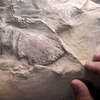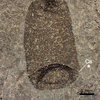The Secrets of an Empire Hiding in a Tree

The ruins of Hattusa, the Hittite capital city. (Source: Encyclopædia Britannica)
Written records of history can be lost or faulty, leaving historians without clues to the past. Where the written word fails us though, we can look to the natural world and find ancient stories told by the planet itself. The collapse of the Hittites was one such mystery... until a recent study suggested an answer hidden in the trees.
At their apex, the Hittite empire controlled much of Anatolia, their influence stretching far across the Mediterranean world. Then, around 1200 BCE, their empire imploded, gone the way of the other ruling states of their day in the Bronze Age Collapse. Many theories have been proposed to explain why these states collapsed as dramatically and quickly as they did: political crises, the marauding Sea Peoples, but it’s increasingly accepted that all these disasters owe themselves to one underlying factor: a massive climate disruption that crippled agricultural practices.
A recent study has pinpointed the Hittite collapse to a three centuries-long climate shift to a colder, drier environment. Moreover, it identifies 1198-1196 BCE as a potential tipping point in the collapse. Such crises are notoriously difficult to define exactly, for the simple reason that as such a disaster intensifies, written records become less likely to be kept. What records that do survive are unlikely to be able to give an exact date to something as ephemeral as a centuries-long climate shift. Instead, researchers used rings from Juniper tree fragments in Anatolia to nail down the collapse to a three year window.

A tree cut to expose its rings. Researchers used Juniper trees to pinpoint the Hittite collapse. (Source: NASA)
Researchers made use of 23 samples from 18 Juniperus excelsa and Juniperus foetidissima trees, stretching across a timeframe from 1775 to 1200 BCE. Tree rings form annually, preserving within them a snapshot of the climate from each year. Juniper trees in particular are very susceptible to a decrease in precipitation, thus indicating which years faced the harshest droughts. In a small window of three years at the end of the Bronze Age, conditions were ripe for a widespread agricultural collapse that would have menaced the entire empire.
These were the conditions the other Bronze Age states had to endure, leading to the widespread political crises and military conflict that precipitated the collapse. The climate shift is not simply one disaster among many, but the scaffolding that held up all the other problems. That still leaves us with an obvious question: if the Hittite collapse was a drawn-out whimper and not a deadly bang, why were the Hitties not able to adapt? Part of the problem has to do with their farming practices. The Hittites' cereal agriculture required widespread landscape clearing, which in turn resulted in soil erosion, making them vulnerable to drought.
Recent archeological findings suggest that the destruction of the Hittites’ capital city Hattusa was not the work of outside invaders as had been thought, but that the city was abandoned by its leaders as the climate crisis worsened. From there the empire splintered into a number of different Hittite fiefdoms that never regained the power of the empire. The Hittites had for years adapted to the shifting climate as well as they could, but as with any such crisis, there reaches a tipping point that can’t be surmounted.
Featured Product
Joe Frazier Boxing Glove
Cool Things!

Is “Paul is Dead” Dead?: Unpacking One Of Pop Culture’s Most Enduring Conspiracy Theories

Scientists Discover Hooves and Skin in Preserved Dinosaur "Mummies!"
A dinosaur discovery just in time for Halloween! In a new analysis of a group of fossils from Wyoming, Scientists have determined this group of fossils are dinosaur “mummies,” with preserved skin and even hooves.

Scientists Record a Bat Catching Birds Mid-Flight!
Bats, birds, screeches, oh my! In a reverse-Hitchcock twist, a new study reveals that a species of European bat catches and eats birds mid-flight.
Specimen Deep Dives

The House that Ruth Built: The Story of the Old Yankee Stadium

The Queen of the Skies: the Story of the Boeing 747

Old Ironsides: The USS Constitution and the Start of the U.S. Navy
Long Form Articles

The Artist Behind the Macintosh: Susan Kare and Apple Computers
While the two Steves, Jobs and Wozniak, are the most well known faces behind Apple computers, equally important to the products and culture of the company were those who crafted the experience of using their computers through design. The most notable of these visual architects was Susan Kare, a designer responsible for “humanizing” Macintosh computers.

Can I Lick It? Yes You Can!
Have you ever been unable to tell if a fossil was really a fossil, but you were too embarrassed to admit it? Have you ever wanted to lick a fossil just because, but you didn’t want to risk judgment from your peers? Well, good news! You can kill two birds with one stone! Licking a fossil can actually help you determine if it’s the real deal or just another rock.

Is It Legal To Own a Meteorite: How to Start Your Outer Space Collection!
Meteorites are some of the rarest geological specimens to be found on Earth. Of course, since these stones are not of our world, purchasing them can sometimes be a confusing process. Is it legal to own a meteorite? In short, yes! Read on for help starting your cosmic collection!


















